June 1st and 2nd was the Tinker AFB airshow, and Lord Nelson and I of course went for the first day. Tinker's airshow runs every other year, as do most base airshows since sequestration. As it was, it was fun, particularly as the Blue Angels performed this year.
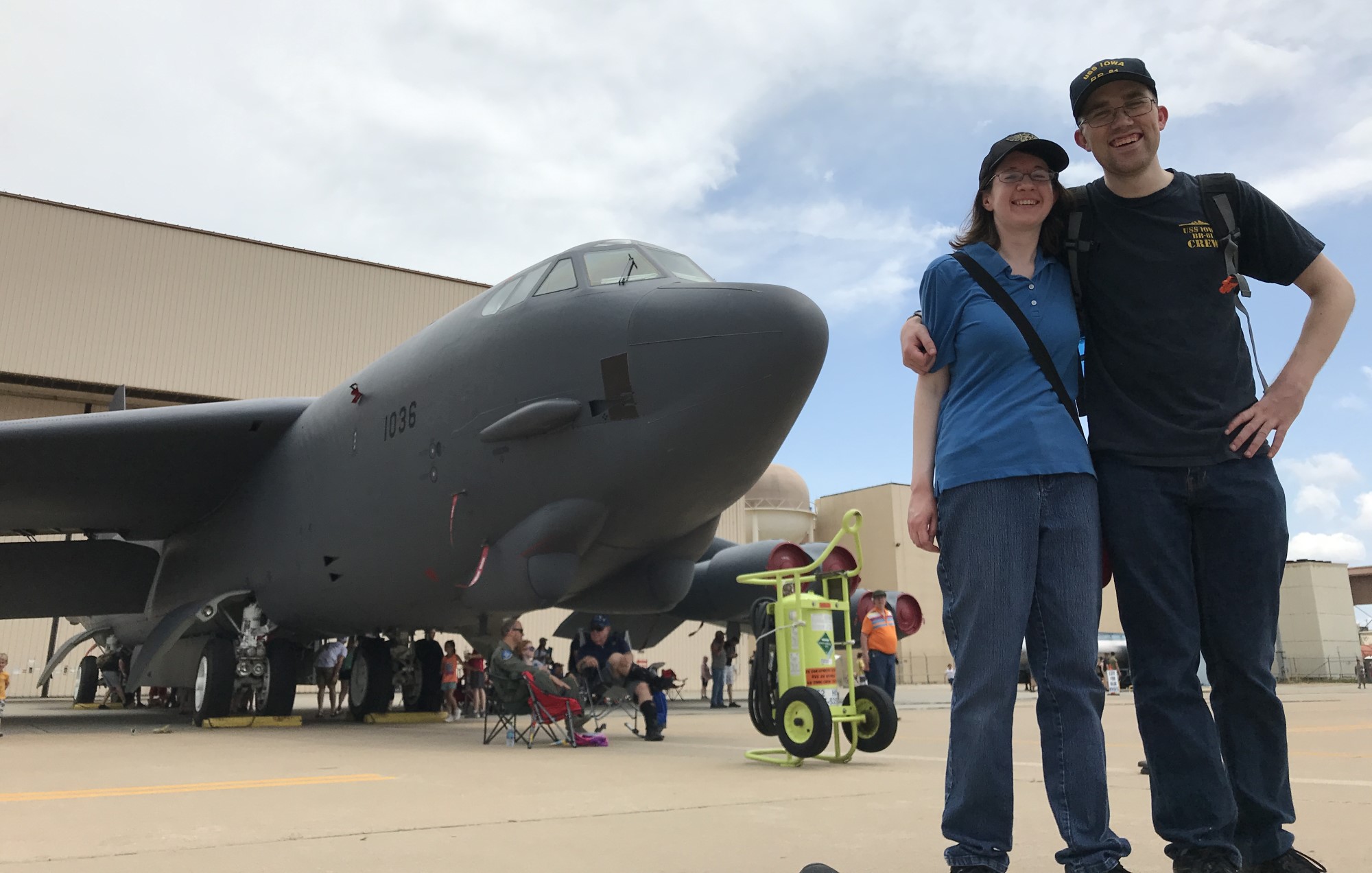
Lord Nelson and me with a B-521
The one caveat I should get out of the way is this. The last airshow I went to was Miramar in 2016, probably the best military airshows in the country. She hadn't been to one in close to 20 years. My one-sentence summary is "decent, but not as good as Miramar". It reminded me of the Spokane airshow I attended in 2014, and both are probably fairly typical of normal base airshows across the country.

An E-6 Mercury
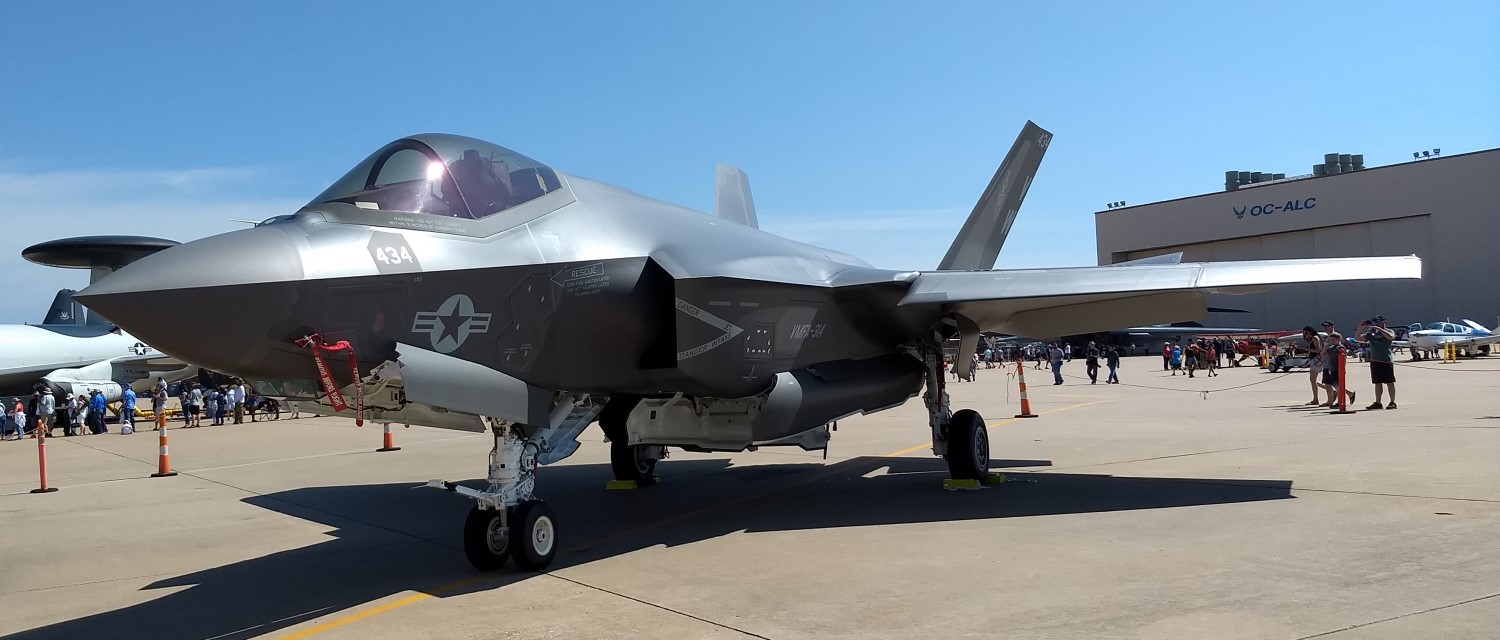
F-35B
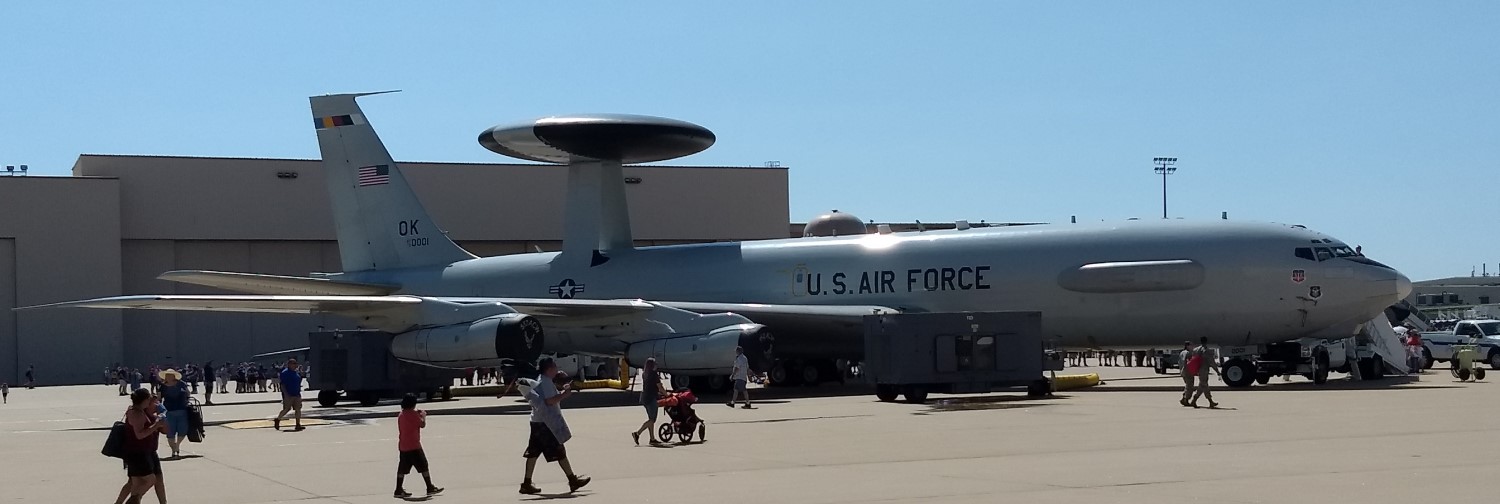
E-3 Sentry
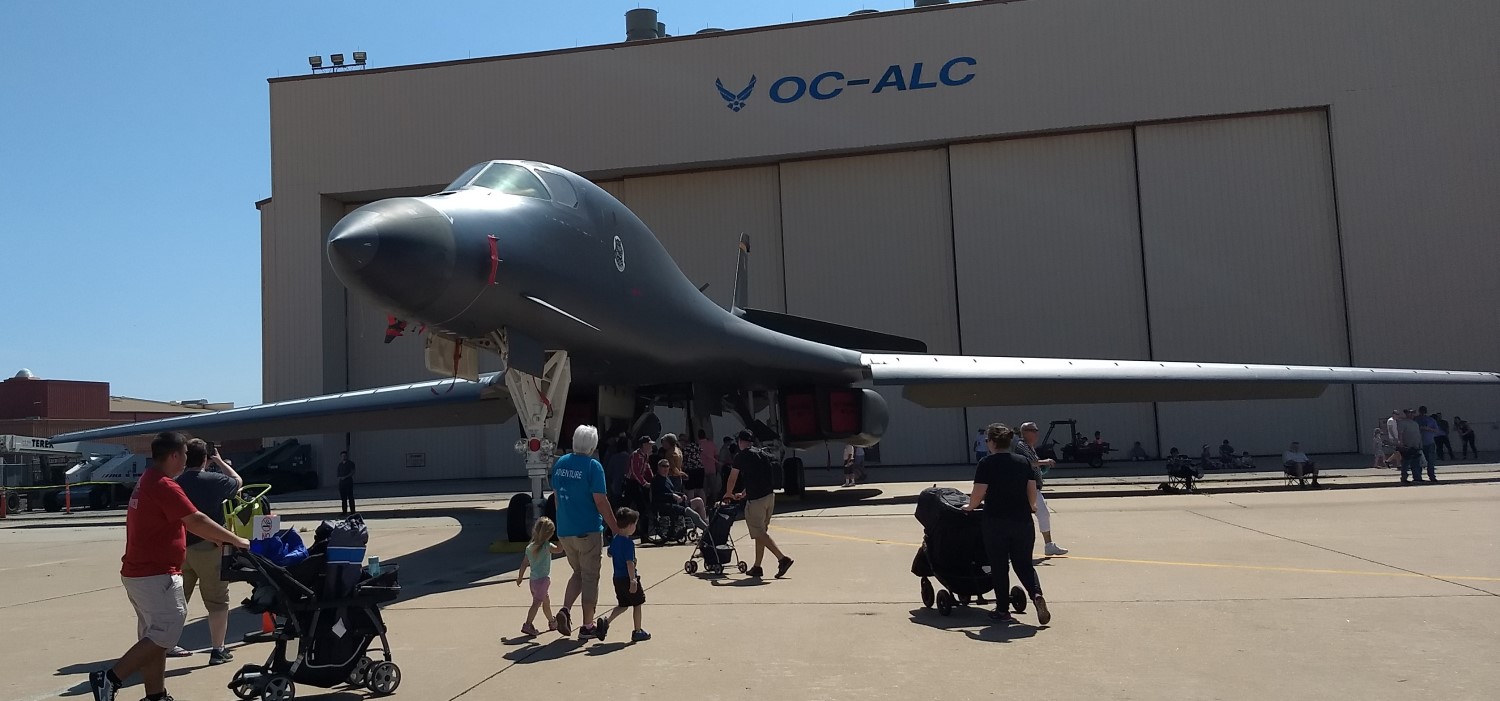
A B-1B on display
We got to the airshow at around 9:45 to get a chance to see the static displays before the flight demonstrations started at 11. They had one of basically everything operated out of Tinker parked on the ramp, and some things that weren't, including a KC-135, an E-6, an E-3, a B-1, a B-52, a C-17, and, weirdly, an F-35B. The KC-135, E-3 and C-17 were all opened up to the public, but the lines were incredibly long, so we didn't go into any of them. There are two ways to deal with this kind of line. You can either have multiple aircraft of a given type out on the ramp, like they did at Miramar, or you can move people through quickly. Unfortunately, they didn't seem to do either of these. I watched the exits of several of the planes, and people seemed to be coming out at the pace I would have expected if each group had a minute or two to talk to someone inside the plane. That's fine if you have a small event or if you have lots of planes open, but Tinker had neither, which meant a lot of time standing in the hot sun for visitors. We chose to instead look at the other static displays, which included everything from an F-16 to an MC-12 (the only plane we actually went inside) to a couple of Canadian trainers. There were the usual recruiting and vendor booths, but nothing particularly interesting. A highlight was when Lord Nelson, at my prompting and with me standing nearby hiding my hat, asked the Navy recruiter what it would take to get assigned to a battleship. He answered that she's have to go back in time about 20 years. (30, actually, but who cares.)
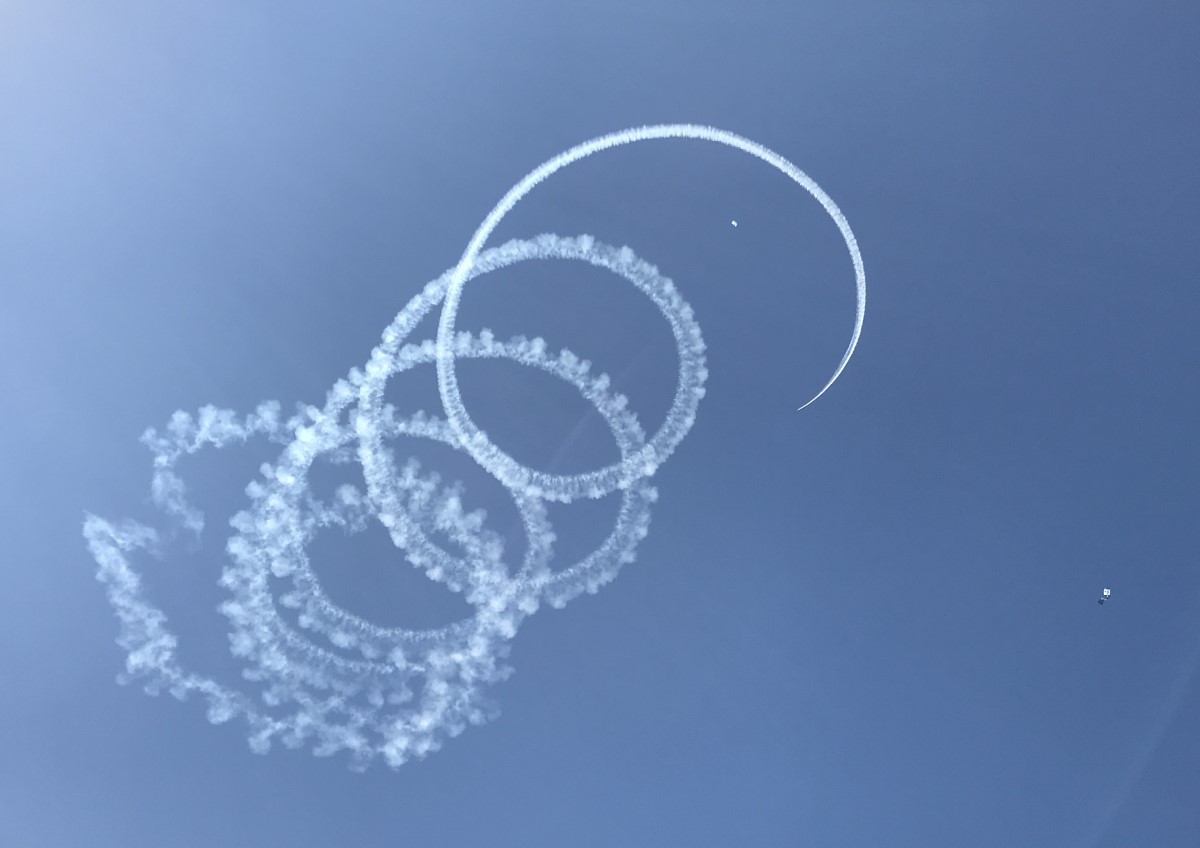
One of the day's acrobatic acts
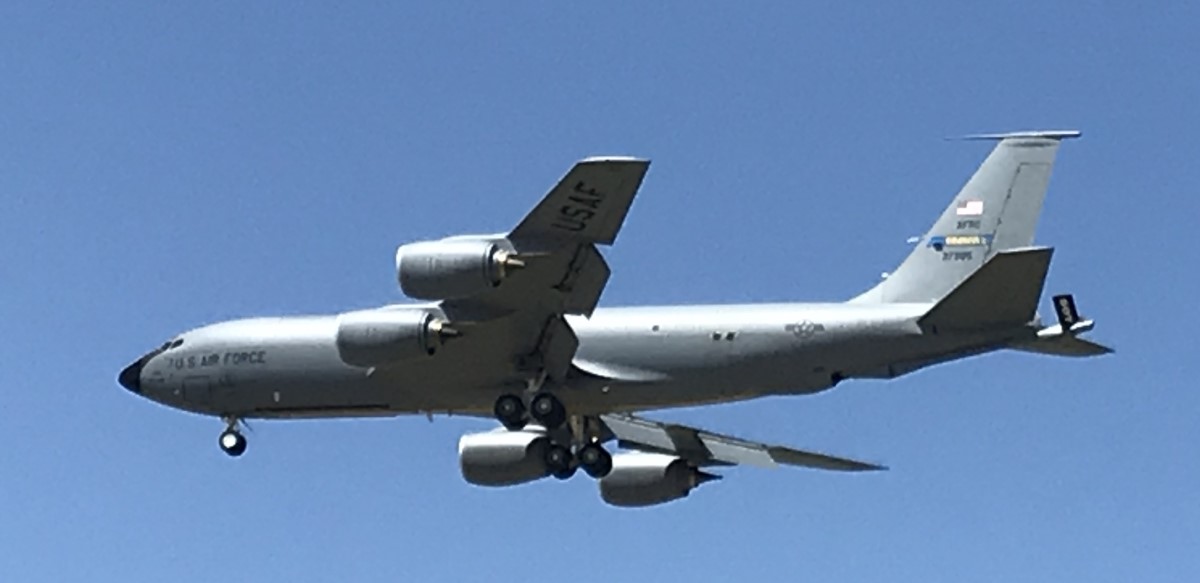
A KC-135, showing its boom
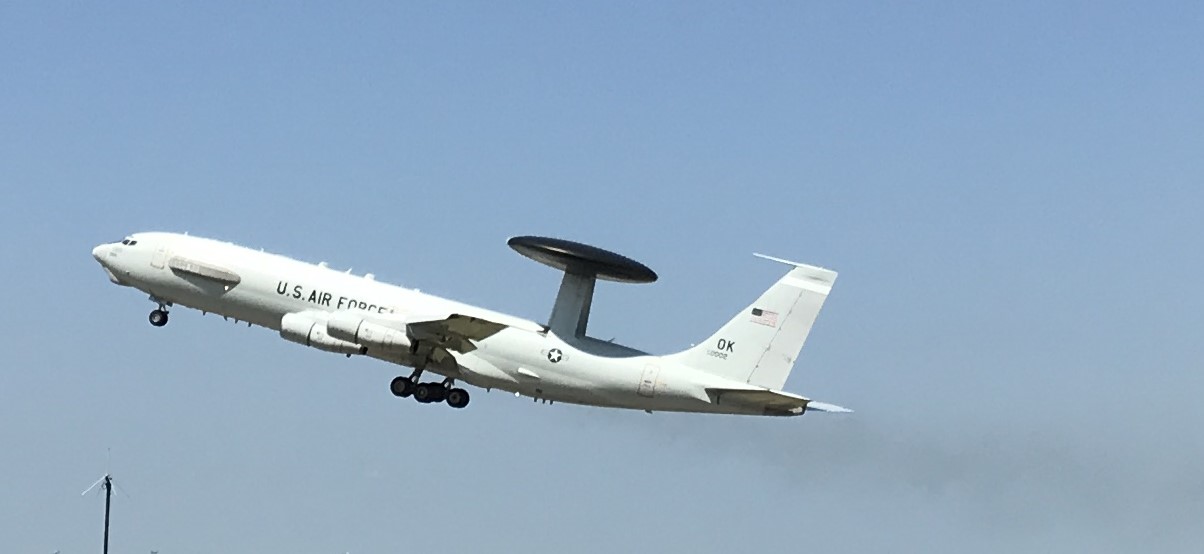
An E-3 makes a smoking takeoff, and a lot of noise
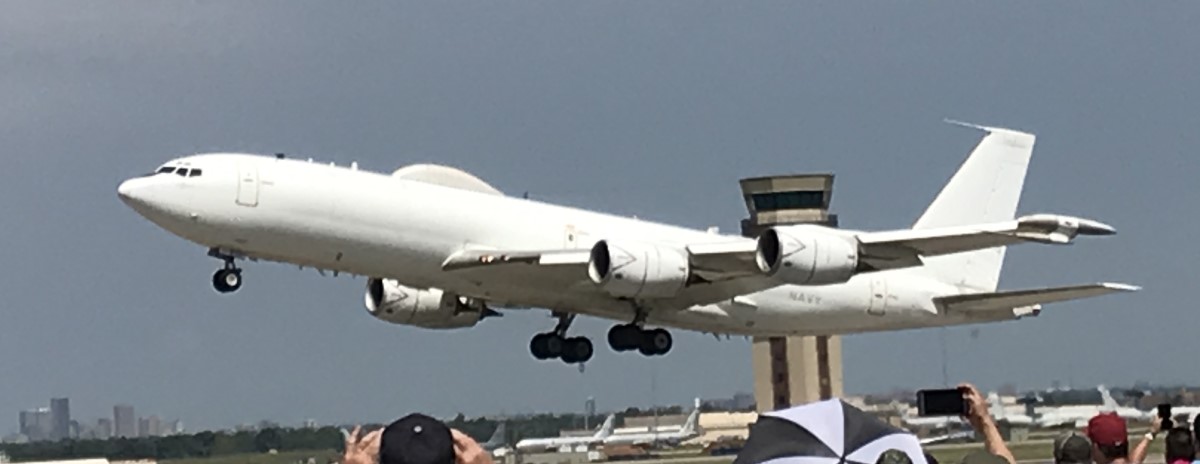
An E-6 takes off to complete the 707 family reunion
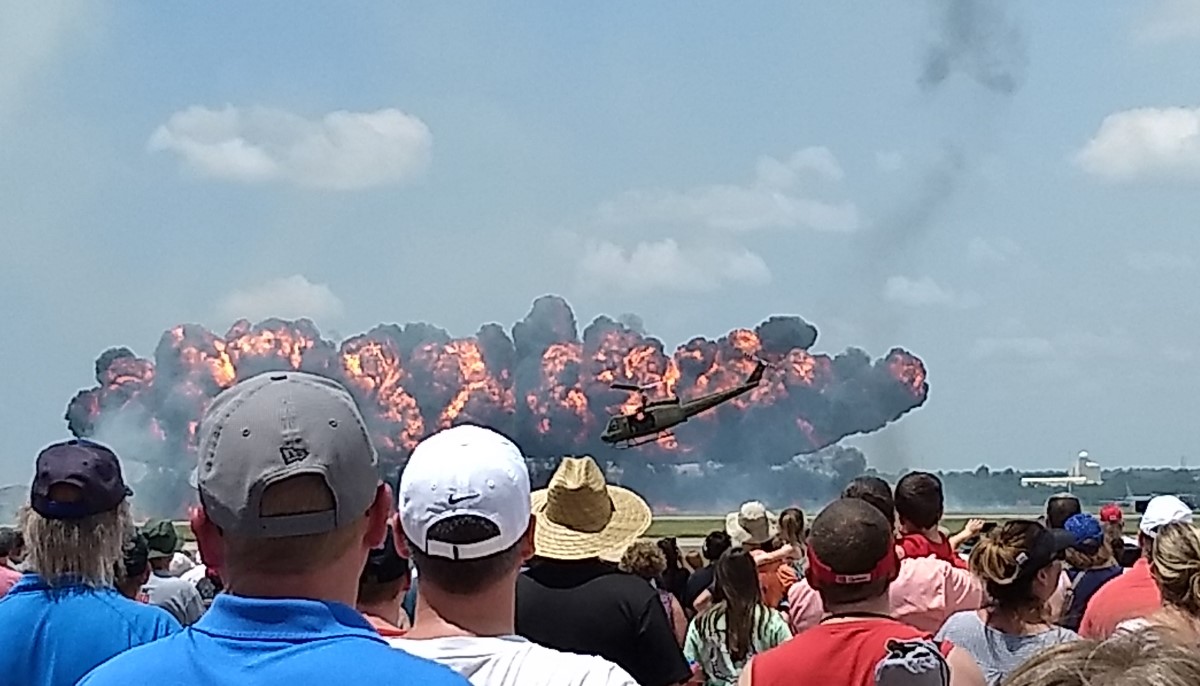
A Huey flies in front of the "napalm"
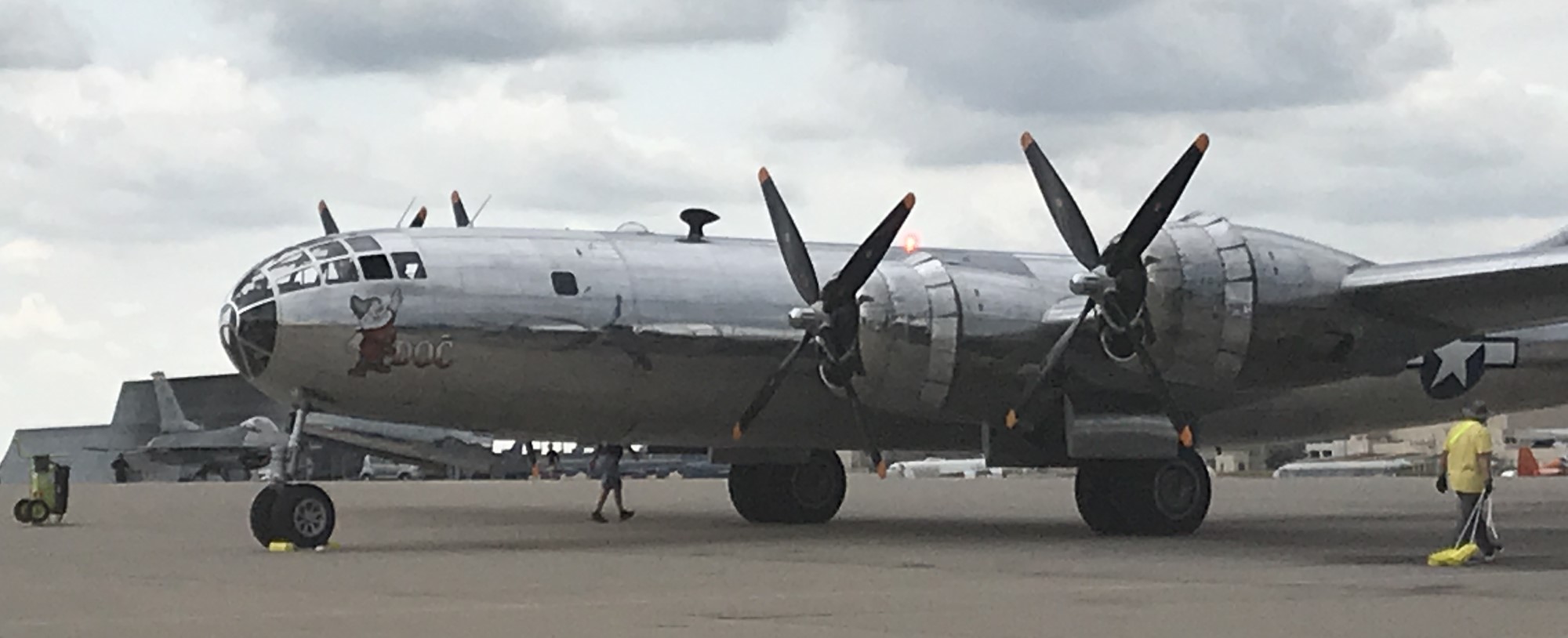
"Doc" on the ground
The flying itself was fairly typical of this kind of airshow. For the first time I can remember at an airshow, Sean D. Tucker didn't perform, but there were a couple of acrobatic acts, the best of which was a great comedy performance by Kent Pietsch in the Jelly Belly Interstate Cadet as a man who didn't know how to fly. It's not an original idea, but he executed it really well, including doing a ribbon cut on a "roll of toilet paper" that he'd thrown out. There was also a very cool Vietnam War CSAR demo, with a couple of A-1 Skyraiders, a Huey, a T-37 Tweet and a bunch of pyrotechnics. There was also a demo from three 707 variants that operate out of Tinker, the Navy E-6 Mercury, the KC-135 tanker, and the E-3 AWACS, which is desperately in need of new engines, particularly when one flies over my house. Another highlight was the appearance of "Doc", one of only two flyable B-29s in the world. She looked gorgeous, and sounded amazing.
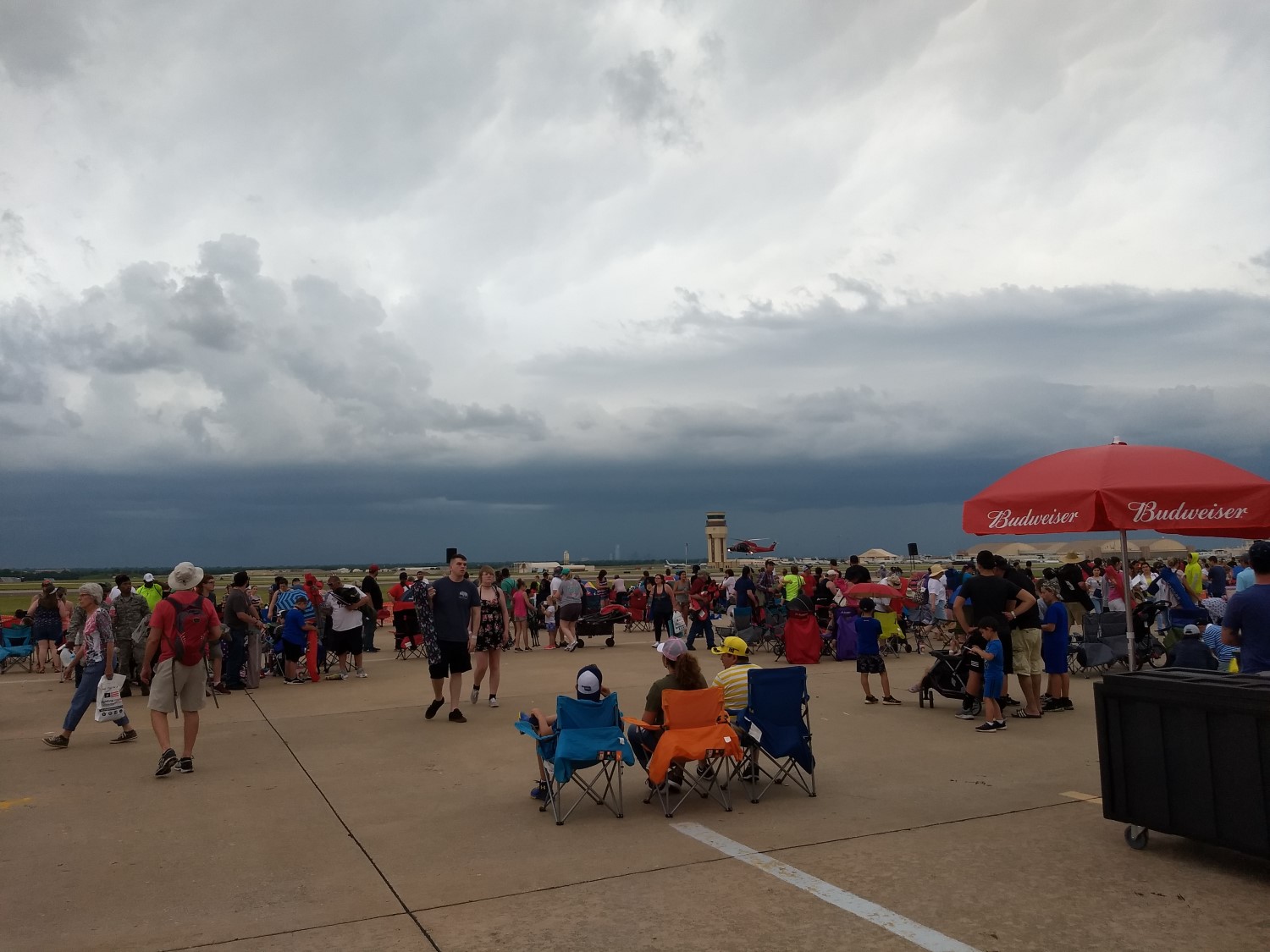
Weather closing in on us
But as 2:00 approached, things began to get interesting as the northwestern horizon darkened.2 They suspended the show, and suggested that everyone seek shelter. I'd hooked up with a friend from church who worked at Tinker, so we planned to just go to his office, which would be more comfortable than the crowded hangars. Thanks to a series of mishaps that I'm not going to go into, we stayed in place too long, and were still heading for shelter when we saw a dust devil heading for us. The result was chaos. Kids were screaming about a tornado, and the wind was brutal. I was afraid I was going to lose my hat, and then have to abandon it because we really needed to get to shelter. But we made it before the rain started, and eventually ended up as quite possibly the most comfortable spectators on base.
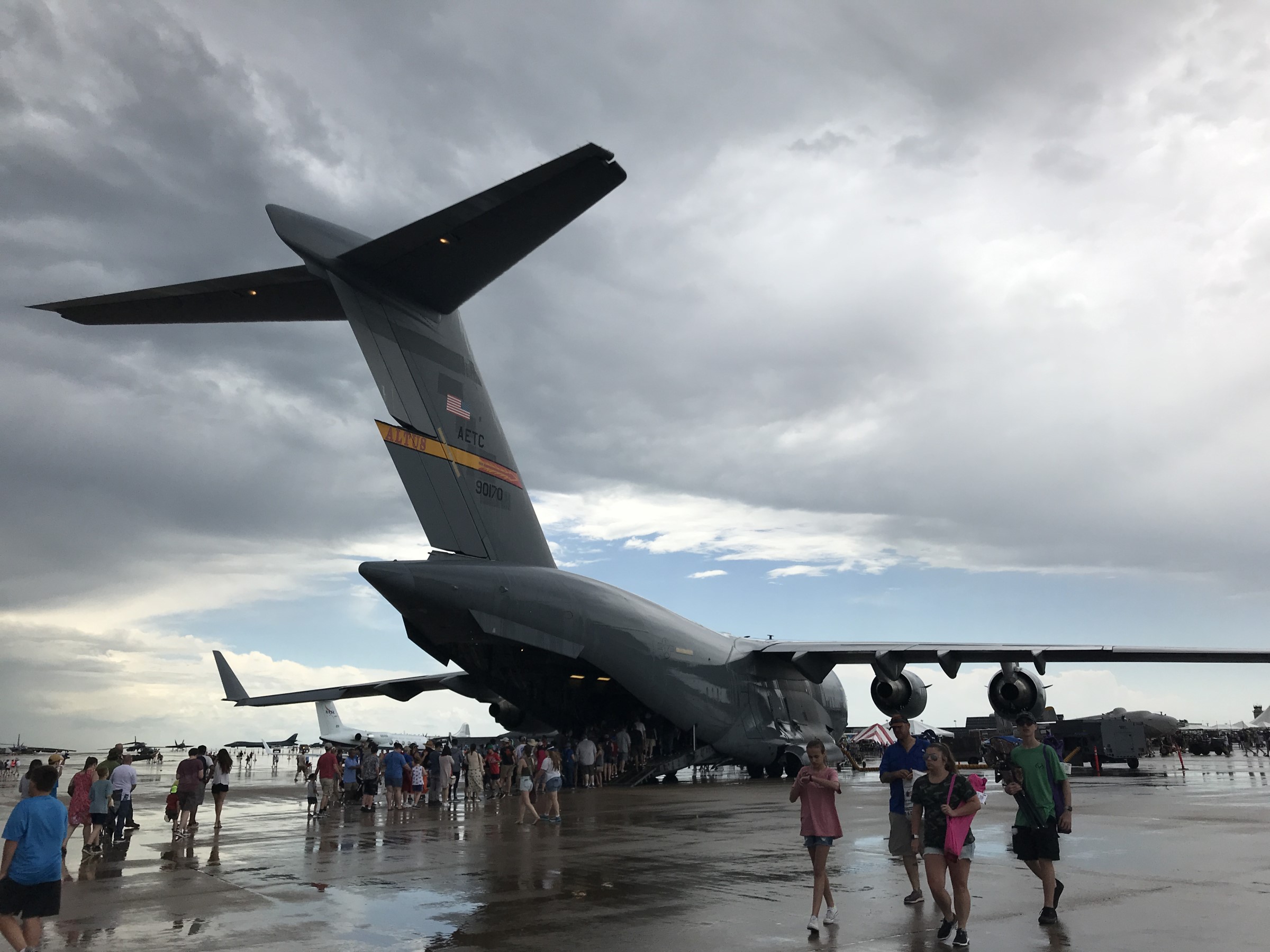
A C-17 after the rain

The Blue Angels, still in the hangar
The storm passed at around 3:15, and nobody was quite sure if the Blue Angels were going to fly. That had been scheduled for 3:00, but their jets had been towed into a hangar, so they were going to have to be towed out. We also wanted to skip the traffic jam that inevitably develops after the last act at an airshow, so Lord Nelson and I headed for the car. As we were on the bus to the parking lot,3 the B-2 flyover that I was sure had been cancelled4 took place. Lord Nelson really likes the B-2, so she was thrilled, while I consider it a false prophet. Speed and altitude are the true way, not stealth.
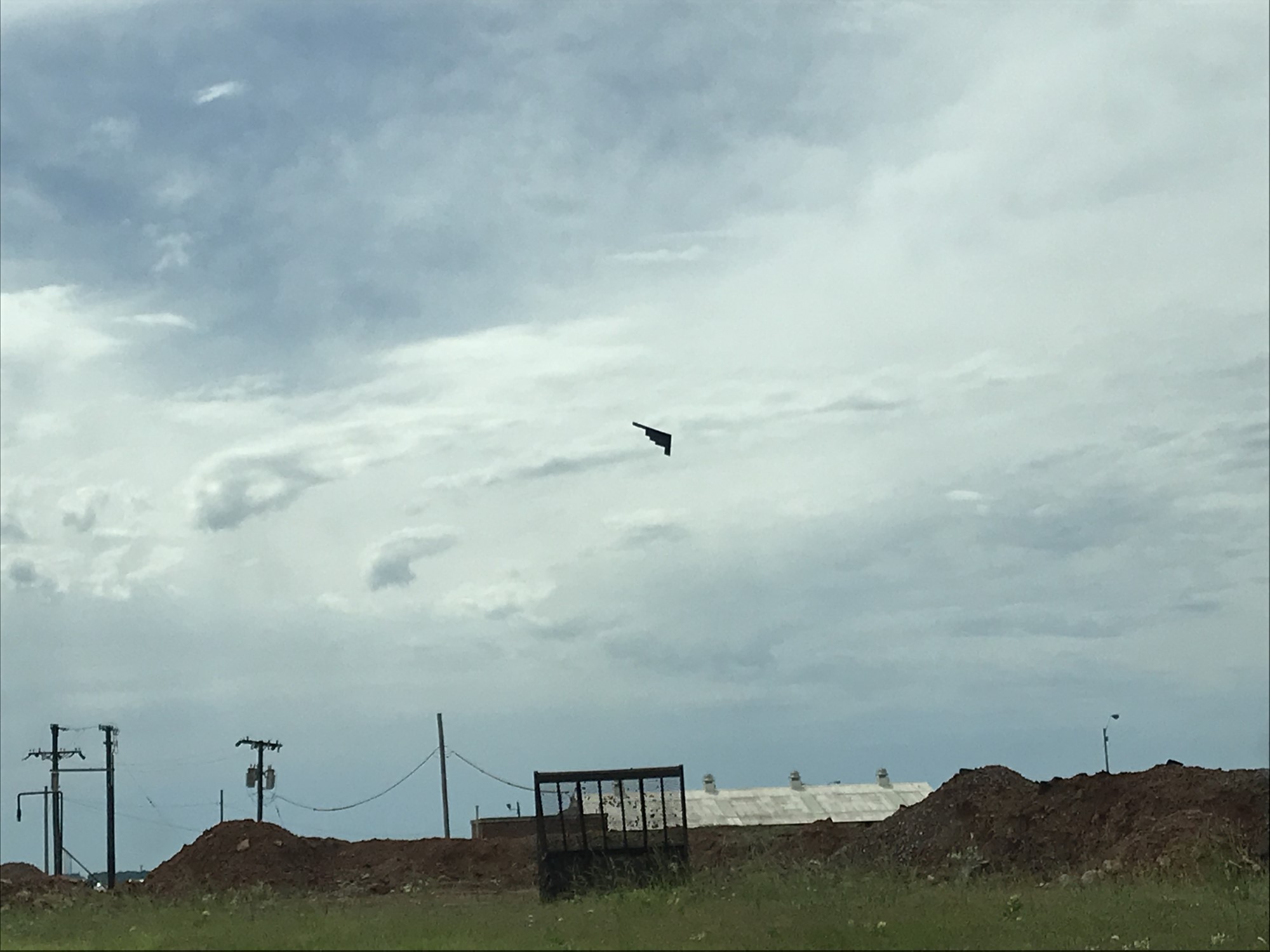
The B-2 flies overhead
As we reached the car, we heard a fighter jet scream overhead. It was an F-16, flying a fairly typical demo, and because we weren't in the normal viewing area, we got a very different show than most of the spectators. A lot of the maneuvers weren't visible, but we got a couple of great views as it turned around above us. We'd decided to watch the Blue Angels (if they flew) from the east side of the base, opposite the main viewing area. They finally got into the air around 4:00, and our view of the show was again rather different from what we would have gotten if we'd stayed. Unfortunately, there was a low ridge between us and the performance, which meant that our only view of several of the maneuvers was through gaps in the buildings and cars. On the other hand, we did get good views of most of the higher maneuvers, and they would often fly over us as they returned for another maneuver. The highlight was at the very end of the performance, as they broke to land, one of the airplanes flew over us at no more than a couple hundred feet. It was great, and the Blue Angels turned in their usual spectacular performance.
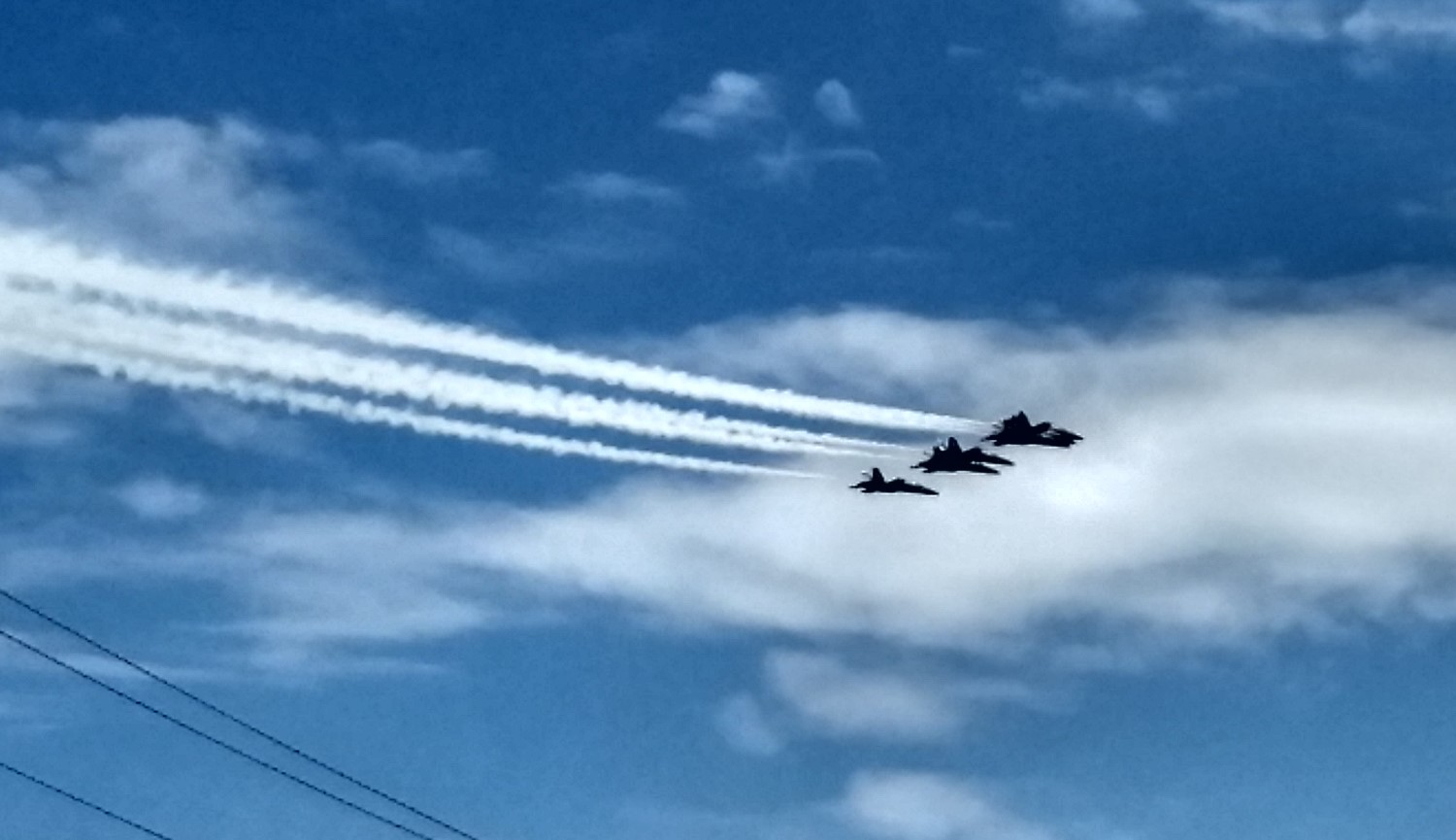
The Blue Angels5
Overall, it was a good day, despite the weather. I look forward to when the airshow returns in 2023.
1 All photos from my collection. ⇑
2 For anyone familiar with Oklahoma weather, this is not a typo. Weather normally comes from the southwest, but it came from the northwest in this case. ⇑
3 I will say that the transport system worked well. ⇑
4 The B-2's stealth coating is famously fragile, and I was making jokes about "do not operate within 100 miles of precipitation". ⇑
5 Sadly, neither of us had a good enough camera to get good pictures of their performance. There are plenty online. ⇑

Comments
If you labelled the Blue Angels as the Blue Angles in the photo caption as a pun, I don't get it.
How much speed and altitude are we talking about? Are you one of those folks that wish we put the XB-70 into production, or do we need to go beyond and order a hypersonic spaceplane?
@Daib
No, that was a typo, not a pun.
@Chris
Yes, I am very much one of those folks. The XB-70 is the coolest airplane ever built, IMO. Hypersonics are cool, too, although I have to restrain myself from talking about Skybolt when they're brought up.
Ah, another member of the true faith, I see.
Me, I'm holding out for a SABRE-engined strategic bomber.
The XB-70 is an extraordinarily beautiful aircraft with mind-boggling performance specs, but what role in 2019 do we really need it for? What's the strategic niche? Our current strategic deterrence/nuclear triad seems to be up to par, while conventional strikes on targets with modern layered air defenses seem to be better accomplished with standoff ordnance like the new (and cheap!) AGM-158B JASSM-ER.
In a conventional shooting war with the PRC or the Rooskies, I just don't see much of a role for a Valkyrie that an existing platform can't provide.
Is this the first picture of Lord Nelson on this blog?
I was 3/4 convinced that the first footnote was going to say something like:
@Chris
The basic answer is that our ability to defeat stealth is improving a lot faster than our ability to defeat high speed/high altitude targets is. Barring a revolution in physics, any missile that can get a B-70-type target is going to be big and expensive because it has to get high and fast. JASSM is an excellent weapon, but it's low and relatively slow, and vulnerable to improvements in radar or signal processing.
@Johan
There was a picture of her from the Stafford Museum in Weatherford, although that seems to be the only previous one. I'm kind of surprised. I thought I'd used more of her.
Some very pretty planes Ü. What are the bulges on the E-3 fuselage for?
There have been pretty impressive developments of laser based ciws - is there any chance that fast/high flying aircraft might be vulnerable to laser weapons in the future, or does something like the inverse square law make that unlikely?
@Bean
The ability to defeat high speed/high altitude targets appears to be reasonably mature already. If we take the stated performance specs for an S-400 system and its 40N6E hypersonic missile, a B-70 type target seems to be well within targetable parameters. Anything that can intercept a ballistic missile warhead diving at Mach 14 can also hit a much larger aircraft that can only achieve Mach 3. The S-500 currently in production is even more capable against extremely fast/high targets, although data is more iffy on that program.
Sure, the missiles are probably also really expensive, but still substantially cheaper than a manned B-70 type airframe by several orders of magnitude. Eisenhower and JFK both saw the writing on the wall for these types of bombers as early as the late 50s, and I don't think they made the wrong call.
I guess the ultimate in speed/altitude is dropping tungsten rods from orbit, Project Thor style, but that opens up a whole new can of worms.
@Alexander
The bulges are presumably antennas. To a first approximation, variable-focus lasers obey the inverse square law in terms of energy on target. At close range, a modern laser is fantastically deadly, but it's not that effective against an airplane at 60,000'.
@Chris
First, shooting down a ballistic missile is considerably easier than hitting an airplane which can dodge. Second, the S-400 is a recent system that may not be entirely debugged (and keep in mind that Russsians compulsively lie about their weapon specs). Yes, it's likely to be effective against B-70 class targets, but the systems are big and expensive, and can't be everywhere. Knock one out, and there's nothing else which can interfere with the bombers. So through the 60s and 70s, there was nothing which could touch them. The SR-71 had comparable performance, and nobody ever shot one of those down.
That has lots of issues, starting with being among the least cost-effective ways of delivering firepower ever invented.
The argument's not really about whether we should build a fleet of B-70s now but about whether it was the right decision not to build them in the '60s. If we had built them, we'd be looking at retiring them around now and working on designing their successor. We may kind of be doing that anyway (see some of the notional specs for 2037 bomber, which make it out to be a sort of optionally-manned, low-observable super-Valkyrie) but without the benefit of decades of B-70 operating experience.
What we did instead of building B-70s was to abortively try to give the B-52s ALBMs (Skybolt) and then, after giving up on that, settle for giving them Hound Dogs (followed by SRAM) so that they could try to blast their way through the crunchy exterior of the USSR's air defenses and fly through to the soft, chewy center. Eventually, AGM-86 ALCMs (entering service in the early '80s) were able to serve as both SEAD and strategic weapon.
Problem with stand-off weapons, especially in the time frame we're talking about, is that they're big, heavy, complicated, expensive, and less reliable in comparison to a gravity bomb. Obviously, even production-variant B-70s would have been much more expensive than a B-52, probably even a B-52 plus its stand-off weapons, but I think that in hindsight it would also have been rather more effective in the main nuclear attack role.
But the people making the decision didn't have the benefit of hindsight, so B-70 fell victim to the general atmosphere of extreme optimism about missile performance in the late '50s and '60s, plus an inflated estimate of the rate of development of Soviet air defense capabilities.
@Bean I thought they looked a bit like a small phased array, like the ones on the sides of an Israeli Eitam, but since the radar is in the rotodome an antenna seems more plausible. They don't appear in older photos of Sentries, so they must be some sort of upgrade.
I'm pretty sure those are part of an ESM upgrade they did back in the 90s.